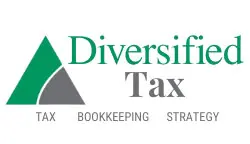The Fundamentals of Blind-Entry Bookkeeping
The Fundamentals of Blind-Entry Bookkeeping
Bookkeeping is the backbone of any thriving business, providing an extensive record of financial transactions and serving as the foundation for informed decision-making. While the traditional double-entry bookkeeping system has long been the industry standard, a lesser-known but equally powerful approach has gained traction in recent years – blind-entry bookkeeping.
This method offers a differentiated perspective on maintaining financial records, promising enhanced transparency, and improved accuracy in financial reporting. In this extensive guide, we will delve into the intricacies of blind-entry bookkeeping, exploring its core principles, the benefits it offers, and the practical steps businesses can take to implement this system effectively.
Understanding Blind-Entry Bookkeeping: The Basics
Blind-entry bookkeeping, also known as single-entry bookkeeping, is a simplified approach to recording financial transactions. Unlike the traditional double-entry system, where each transaction is recorded as a debit and a credit, the blind-entry method focuses on capturing the net effect of a transaction on the business’s cash flow.
At the core of blind-entry bookkeeping is the principle of recording only the incoming and outgoing cash flows, without the need to maintain a complex system of accounts. This streamlined approach makes it easier for small businesses and entrepreneurs to manage their finances, as it reduces the administrative burden associated with traditional bookkeeping practices.
The Blind-Entry Bookkeeping Process
The blind-entry bookkeeping process typically involves the following steps:
- Cash Receipts Journal: All cash received by the business, such as payments from customers, is recorded in the cash receipts journal. This includes cash sales, customer payments, and any other sources of cash inflow.
- Cash Disbursements Journal: All cash payments made by the business, such as vendor invoices, rent, and utilities, are recorded in the cash disbursements journal. This captures the outgoing cash flow.
- Bank Reconciliation: The business’s bank statements are reconciled with the cash receipts and cash disbursements journals to ensure the accuracy of the recorded transactions and the overall cash balance.
- Financial Reporting: Based on the information gathered from the cash receipts and cash disbursements journals, the business can generate essential financial reports, such as the income statement and the cash flow statement.
By focusing solely on cash-based transactions, blind-entry bookkeeping provides a clear and concise view of the business’s financial health, making it easier to manage cash flow, track expenses, and make informed decisions.
Comparing Blind-Entry to Double-Entry Bookkeeping
While the blind-entry and double-entry bookkeeping systems share the common goal of accurately recording a business’s financial transactions, they differ in their approach and complexity.
Double-Entry Bookkeeping:
- Records each transaction as a debit and a credit, ensuring the accounting equation (Assets = Liabilities + Equity) remains balanced.
- Provides a more comprehensive view of the business’s financial position, including assets, liabilities, and equity.
- Requires a higher level of expertise and more detailed record-keeping, making it more suitable for larger, more complex businesses.
Blind-Entry Bookkeeping:
- Records only the net effect of a transaction on the business’s cash flow, simplifying the bookkeeping process.
- Focuses on capturing the inflows and outflows of cash, making it more suitable for small businesses and startups with straightforward financial transactions.
- Requires less specialized knowledge and can be more easily managed by business owners or non-accounting staff.
The choice between blind-entry and double-entry bookkeeping often depends on the size, complexity, and specific needs of the business. Smaller enterprises may find the simplicity of blind-entry bookkeeping more appealing, while larger organizations may benefit from the more comprehensive financial reporting capabilities of the double-entry system.
The Potential Benefits of Blind-Entry Bookkeeping
Adopting a blind-entry bookkeeping approach can bring a range of advantages to businesses, particularly those in the early stages of growth or with relatively uncomplicated financial transactions. Let’s explore the key benefits of this bookkeeping method:
Simplicity and Ease of Use
Blind-entry bookkeeping is inherently more straightforward than the double-entry system, as it focuses solely on recording cash inflows and outflows. This simplified approach makes it easier for business owners, entrepreneurs, and non-accounting staff to manage the financial records of the organization. The reduced complexity of the bookkeeping process can lead to increased efficiency, reduced administrative burdens, and better overall financial management.
Improved Cash Flow Visibility
By emphasizing the recording of cash receipts and disbursements, blind-entry bookkeeping provides a clear and immediate picture of the business’s cash flow. This enhanced visibility allows for better decision-making, as business owners can quickly identify patterns, detect potential cash flow issues, and make informed decisions to maintain a healthy financial position.
Reduced Risk of Errors
The single-entry nature of blind-entry bookkeeping reduces the likelihood of errors compared to the more complex double-entry system. With fewer transactions to record and reconcile, the chances of making mistakes or overlooking discrepancies are significantly lower. This improved accuracy can lead to more reliable financial reporting and a stronger foundation for strategic planning.
Lower Bookkeeping Costs
Implementing a blind-entry bookkeeping system typically requires fewer resources, both in terms of time and financial investment. Business owners may be able to manage the bookkeeping tasks themselves or hire a part-time bookkeeper, rather than engaging a full-time accounting professional. This cost-effective approach can be particularly beneficial for small businesses and startups with limited financial resources.
Adaptability and Scalability
As a business grows and its financial complexity increases, the blind-entry bookkeeping system can be easily scaled and adapted to meet the changing needs. While the system may eventually need to transition to a more comprehensive double-entry approach, the blind-entry method provides a solid foundation and a smooth transition path, allowing the business to maintain financial control during periods of growth and expansion.
By leveraging these benefits, businesses can enhance their overall financial management, make more informed decisions, and allocate resources more efficiently – all while maintaining a streamlined and transparent bookkeeping process.
Best Practices for Blind-Entry Bookkeeping
To ensure the successful implementation and ongoing effectiveness of a blind-entry bookkeeping system, consider the following best practices:
- Establish Clear Policies and Procedures: Develop a comprehensive set of policies and procedures that outline the specific steps for recording cash receipts, cash disbursements, and reconciling bank statements.
- Implement Robust Internal Controls: Implement strong internal controls, such as segregation of duties and regular audits, to mitigate the risk of errors or fraudulent activities.
- Leverage Technology and Automation: Utilize accounting software or cloud-based solutions to streamline the blind-entry bookkeeping process, automate reconciliations, and generate financial reports.
- Provide Ongoing Training and Support: Ensure that your team members responsible for bookkeeping tasks receive regular training and support to maintain their proficiency in the blind-entry system.
- Monitor and Adapt: Continuously monitor the effectiveness of your blind-entry bookkeeping system, and be prepared to make adjustments or transition to a double-entry approach as your business needs evolve.
By following these best practices, businesses can maximize the benefits of blind-entry bookkeeping, maintain accurate financial records, and lay a solid foundation for future growth and success.
Embracing the Power of Blind-Entry Bookkeeping
In the dynamic world of modern business, the choice between blind-entry and double-entry bookkeeping can have a significant impact on a company’s financial management and overall success. While the double-entry system offers a more extensive view of a business’s financial health, the blind-entry approach provides a streamlined and efficient alternative that can be particularly beneficial for small enterprises and startups.
By understanding the core principles of blind-entry bookkeeping, recognizing its unique advantages, and implementing it with a strategic and structured approach, businesses can unlock a world of financial transparency, improved decision-making, and enhanced operational efficiency. As your organization grows and evolves, the flexibility to transition from blind-entry to double-entry bookkeeping ensures that your financial management practices will continue to align with your changing needs.




